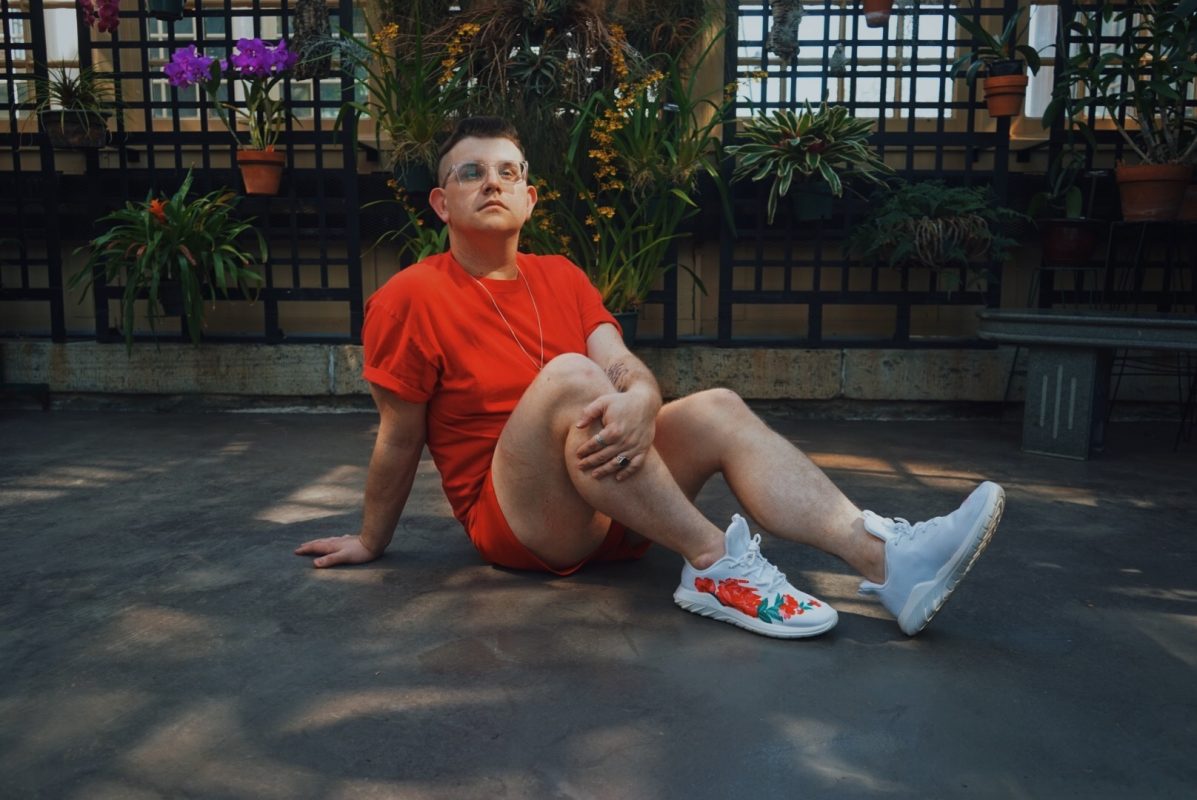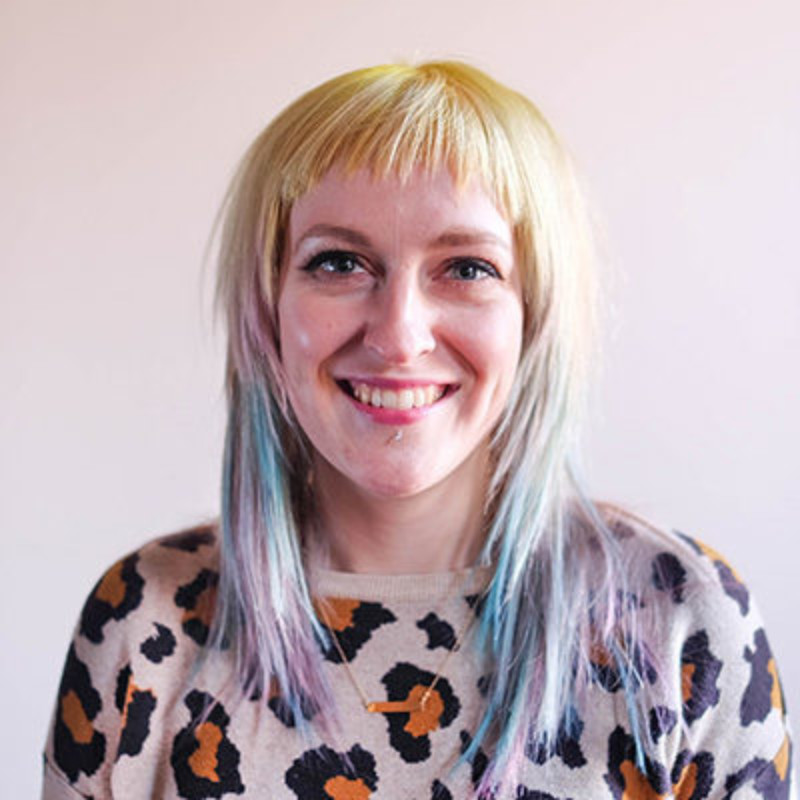
Every September, Fashion Week comes to New York, and the city is filled with glitz, glamour, and attitude. This NYFW, Baltimore musician Hunter Hooligan brought his signature dance floor-ready grooves to the runway with the debut of his new song “Pink,” which served as the backdrop for designer Stevie Boi’s collection by the same name. We sat down with him to talk about the process of writing a song for the runway, how style and music intersect, and Baltimore’s unique creative scene.
Tell us a bit about yourself as an artist.
I started writing original music when I was 12 or 13, and never really stopped. Music has been so many things for me over my life: It’s been like therapy, it’s been the place that I put all my hopes and wishes and fantasies, and it’s been the thing that has guided my life. I didn’t question it a lot. I’ve taken inspiration from my family, who have always been really supportive of me as an artist. My parents both had a very deep love of music. There were always all different kinds of music being played in the house when I was young.
When did you and Stevie Boi decide to collaborate on a song for his show?
What was the concept for the song “Pink?” What was your inspiration?
The first time I heard the song that became “Pink,” I knew it was the one. I had reached out to several different producers and wound up going into the studio with Will Lederer to fill out an instrumental he’d sent me. The lead synth in the song was this very golden pink for me—it was very joyous and effervescent. It was bubbly, light, all the things I associated with the line after talking with Stevie.
Before writing the lyrics, I went down a rabbit hole on the history of pink in fashion, and that took me to the idea of timelessness and recurrence, of pink going in and out of fashion and what that has meant in the broader cultural landscape through time. I was also thinking about pink being this intimate color, and I had the idea for the lyric “we’re turning pink.” That took me to researching the act of blushing. That universal feeling of blushing is so warm, and it can be so innocent, or it can be sexual, it can be multifaceted, it can be exciting, it can be scary, it can be embarrassing, and it can be vulnerable.
It gives away your emotions.
Exactly. I was thinking about vulnerability, recurrence, and timelessness. Then this whole story popped into my head and everything I’d been researching became clear. This story of reincarnating through time and experiencing this intimacy, and the common thread of that being this biological act of blushing. I recorded a demo and sent it to Stevie, not really knowing what he would make of it, and he replied almost instantly saying, “It’s perfect.”
Was the process of writing and recording “Pink” any different than your other songs?
Yes, I actually did something I’d never done before on a song, which was talking the verses instead of singing them. Every melody or lyrical approach I’d taken up until that point felt too wholesome. I was very cognizant of the fact that this was ideally going to be on the runway, so there needed to be this attitude or this sort of cool to it. The turnaround from writing to recording the song to getting it out was also very quick compared to my usual process. I usually get to sit with a song for longer, but this was very exciting, and I felt so grateful to be a part of the wider vision for the line and to experience the show itself.
What was it like being present at the fashion show?
It was really fun. I have a deep love for style, and fashion is sort of the “fine art” of style. Seeing a show that was about fashion as an art, taking clothing and elevating it to the position of an art object was really fun. It was wonderful to be there and to see the clothing presented, there’s a performative aspect to it. It was gorgeous.
Did you blush when your song played?
Immediately the nerves kicked in when the song started, but I just had to check in with myself and be like “this isn’t about you,” you know? It’s not about the music—the music is an accessory in the atmosphere in the wider experience of the show. The show was very much about the clothes and very much about Stevie and his artistic vision, and I was just glad to be part of that and to contribute in some way.
How would you describe the correlation between fashion and music?
The two to me are intrinsically linked. I saw an interview with Nicholas Cage, of all people, and he said something that really struck me. He was talking about the rhythm of his performance in a film, and he said, “I think all great art aspires to be music.” That to me rings true, not because I’m trying to put music above other art forms, but there is an immaterial aspect of music. All you need to make music is your voice and a sense of rhythm. I think that gets at a very pure sense of creativity. It’s literally just the manipulation of sound, which is not a material thing, it’s energy. As someone who makes music, all other art forms funnel into that for me. Fashion for me, is really style, and style is storytelling, and storytelling is magic. And that is so essential to the music, because it’s a physical embodiment of it.
Can you describe your personal relationship with style and fashion?
For me, fashion and style are transformative. It also acts as a place for me where a lot of my other influences, not necessarily musical, find a home in expression. My number one rule for style is give yourself permission to try on anything, because fashion can be a way to explore your identity. And when used for that, it can be extremely healing, it can be extremely validating, it can be extremely personal and spiritual. Because that is the sort of power of fashion when utilized in its most noble pursuit, is the expression and the exploration of identity.
What is your favorite thing about being an artist in Baltimore?
There is such a wealth of creativity, art, excitement, and passion here. And it’s pure in a way, because we don’t have that external pressure that “hubs” like New York or L.A. or Chicago put on artists to make money for other people. There’s no one looking over our shoulders. It can be a double-edged sword to not have that kind of attention on our city’s art scene, there’s the good and the bad with that, but because of that I think there is so much pure intention.
Baltimore is an incredibly fertile place. It’s full of inspiration, it’s full of stories, full of every ingredient you need for creativity—beauty, mystery, enchantment, and struggle. I think that Baltimore is very much so the rose growing in the concrete. And everybody wants to focus on the concrete for some reason. The rose is much more beautiful.
How would you describe Baltimore’s style scene?
Adventurous! Uninhibited, unhinged. There is a sort of disregard for convention, which I think is essential to personal style. There is also an adventurousness to the designers here. Stevie Boi is incredible, and Bishme Cromartie is absolutely divine. Baltimore style is personal, it’s expressive, it’s adventurous, and it’s not lost in its own performance. Because there is a performative aspect to fashion and style, but the expression is not lost in that. I think that there is enough distance between style and fashion here. That they’re not absolutely devouring each other. Baltimore hasn’t traditionally had access to the fashion houses and big brands, and we’ve proven that we don’t need that. We’ve shown that our natural sense of style trumps all of that noise.
What else can we look forward to from you? Any upcoming projects people should know about
Yes! There is a project that I’ve worked on for a very long time with DJ James Nasty as the executive producer, called “Child of Venus,” which will be a multi-part musical narrative. Part one will be here soon.
Full disclosure: The author’s husband produced “Pink.”
